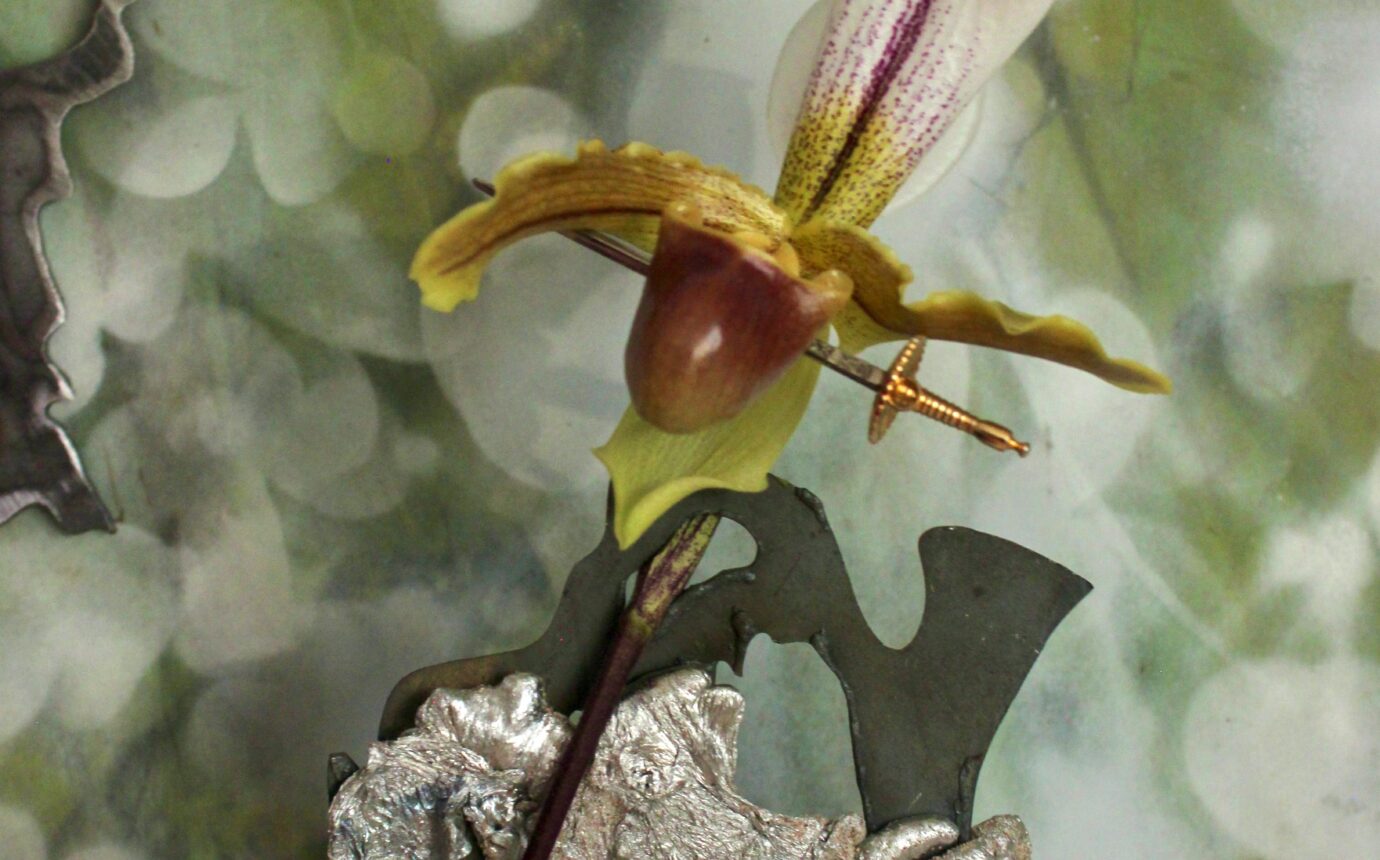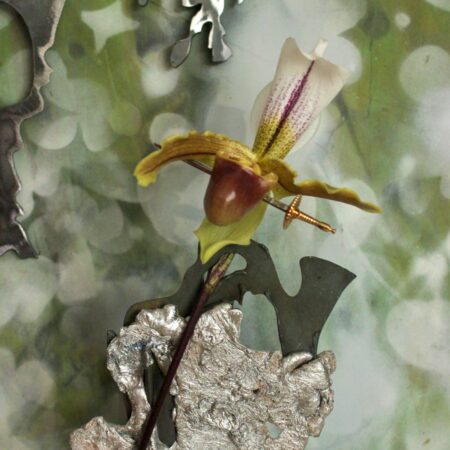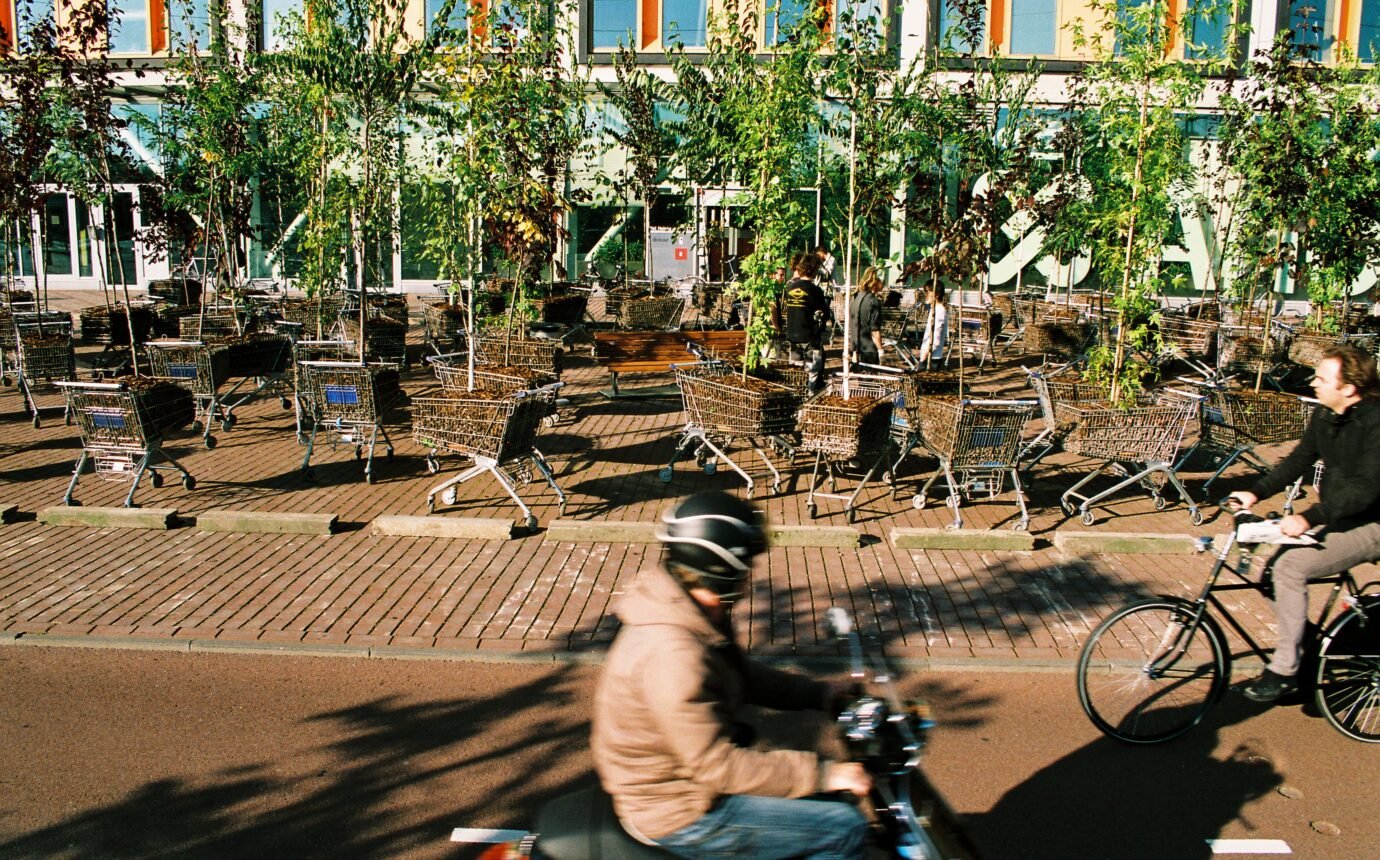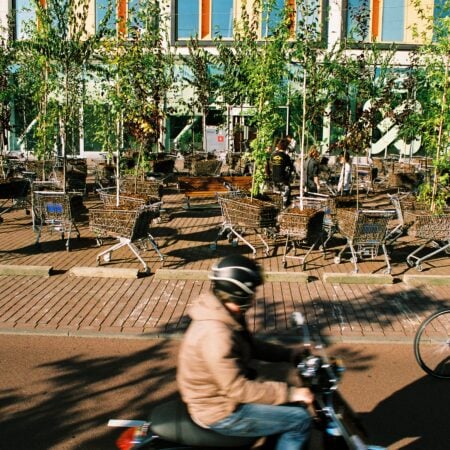Flower Hag on Ethical, Fantasy-Inspired Floral Design


Toronto Florist Maddie Gnam merges unconventional aesthetics and local sourcing to redefine floral art and defy tradition
Maddie Gnam—the mind behind Toronto floral studio Flower Hag—found floristry while searching for solace during a period of debilitating mental health struggles as a student in Montreal. Seeking reprieve from overwhelming undergraduate responsibilities, they found refuge in a local plant shop—a self-soothing side quest that unexpectedly set the foundation for their future. When the shop owner offered Gnam a part-time role, they were introduced to the often-unforgiving realities of the floral industry.
After relocating to Toronto, Gnam juggled part-time floral work with studies in fashion design at Toronto Metropolitan University (TMU), eventually enrolling in Seneca College’s floral design program—one final academic effort in a system that increasingly felt out of sync. It was in these in-between moments—between creative bursts and personal upheavals—that Gnam realized floral design was the one thread that continued to guide them forward.
As they moved beyond part-time gigs—working with names like the Shangri-La—they decided to take a leap and build their own brand full-time. “It’s what motivated me to keep going after a tumultuous past.”
Dispelling Convention into Creativity
Hag isn’t usually a word associated with beauty—it conjures images of knotted villainous women from fairy tales. But Gnam’s interpretation twists those connotations into something empowering: “A gnarly wise woman who has this wisdom and mystical aura.” In reclaiming hag, Gnam reclaims their fears. Once terrified of clowns and dolls, these unsettling motifs now inspire much of their work. Drawing from their fashion school days—where they designed garments using severed doll hands and faces—they explore the grotesque, the magical and the otherworldly as methods of protection rather than terror.
Their inspirations span Queer fantasy literature, cartoons, earthy elements like bugs, worms and nests, and even Dragula—a horror-themed drag competition where contestants embrace gore, monstrosity and resilience. Much like the show’s contestants, Gnam’s approach is about transforming the unsettling into something powerful—recontextualizing fear into beauty, and discomfort into something worth celebrating.
Crafted with Wise Intention
Gnam’s arrangements are built from intention, resourcefulness and an acute awareness of the floral industry’s complexities. They aim to foster a like-minded community by avoiding sources—like patented baby’s breath from Israeli growers—that conflict with their political views. Gnam’s designs are built on a foundation of ethical sourcing and environmental consciousness, grounded in the realities of an industry that too often overlooks labour abuses and ecological harm—like farms that use pesticides harmful to its farmers.
Their process begins with materials seasonal between May and October in Toronto, along with what’s been foraged, dried or salvaged for reuse. “The floral industry can be incredibly wasteful, especially around weddings and one-day events,” they explain. “I hoard materials—branches, dried florals, moss—so nothing is discarded without thought.”
Signature elements recur: amaranthus, with its heavy draping blooms; smoke bush, prized for its deep, moody tone and dry-able quality; clematis for its delicate flair; and Spanish moss, a soft, silvery texture they incorporate into nearly every design. Branches act as the architectural base, allowing them to construct gravity-defying shapes—tall, airy structures that feel as much like sculpture as bouquet. Their approach to floral design is less about strict symmetry or trends and more about creating worlds that hold memory, decay, beauty, politics and play.
Reimagining Spaces
Being the brain behind Flower Hag isn’t always romantic. Sometimes it’s precarious, even physically grueling—and for Gnam, that’s part of the thrill. “I like risk,” they say. “There’s an adrenaline rush to it. It’s like a game. You’re figuring out how to hang a tree upside-down from a ceiling with airplane cables or using a stack of hidden buckets as a base to make an arrangement look like it’s floating.”
Gnam has worked with other florists whose aesthetic veers far from Flower Hag, requiring constant adaptation. In those moments, their curiosity becomes a tool. “A lot of the fun is behind the scenes,” they add. “It’s not just about the flowers—it’s about how to make the whole thing hold.” Whether stringing branches with fishing wire to create suspended shapes or working in unusual venues—like a rave site with crumbling walls they transformed with moss and grasses—they find a way to balance structure with spontaneity. “There were holes in the wall, and I used them to thread grasses that looked like doll hair.”
Shifting with the Season
Seasonality is not just an aesthetic choice for Gnam—it’s a framework for ethical practice. In warmer months, they work closely with local farmers to source materials, building community and resisting the global floral supply chain that’s rife with ethical concerns—from underpaid labour to environmental exploitation. In colder months, their work shifts toward dried florals, hoarded materials, and foraged elements, always with an eye on minimizing waste.
Nonetheless, their designs retain a signature look year-round: tall, branched, reaching an embrace of negative space, structure, and asymmetry. But within those shapes, they also adapt. It might not always be the same flowers, they explain, but their signature arrangement shapes are timeless.
Floral Futures
Gnam’s vision for floristry includes challenging the norms of what is considered “beautiful.” They are currently exploring the use of dead and dried materials—things often overlooked—as well as unconventional components like cinderblocks, metal piping, or even food, in sustainable ways.
Their previous work with Smells Like Flowers and Gorm, a fashion brand shoot involving wearable floral structures, continued this boundary-pushing ethos. “We used hoarded dried materials to make chainmail pepper trains and weaponry-like accessories,” they explain, blending floral mechanics with sculpture and garment-making.
For their most recent project, a small seashell shoot done with friend Stella and other local artists, Gnam leaned into, “wanting to hang out in a tiny room with a sheet and make something calming.” Using metal wall hangings, vases, and collected seashells, they created a soothing, textured dreamscape.
Whether working on a surreal large-scale installation or a single stemmed arrangement, Gnam’s work is always rooted in reimagination: of beauty, of power, of what floristry can mean when you look beyond the petals.









































